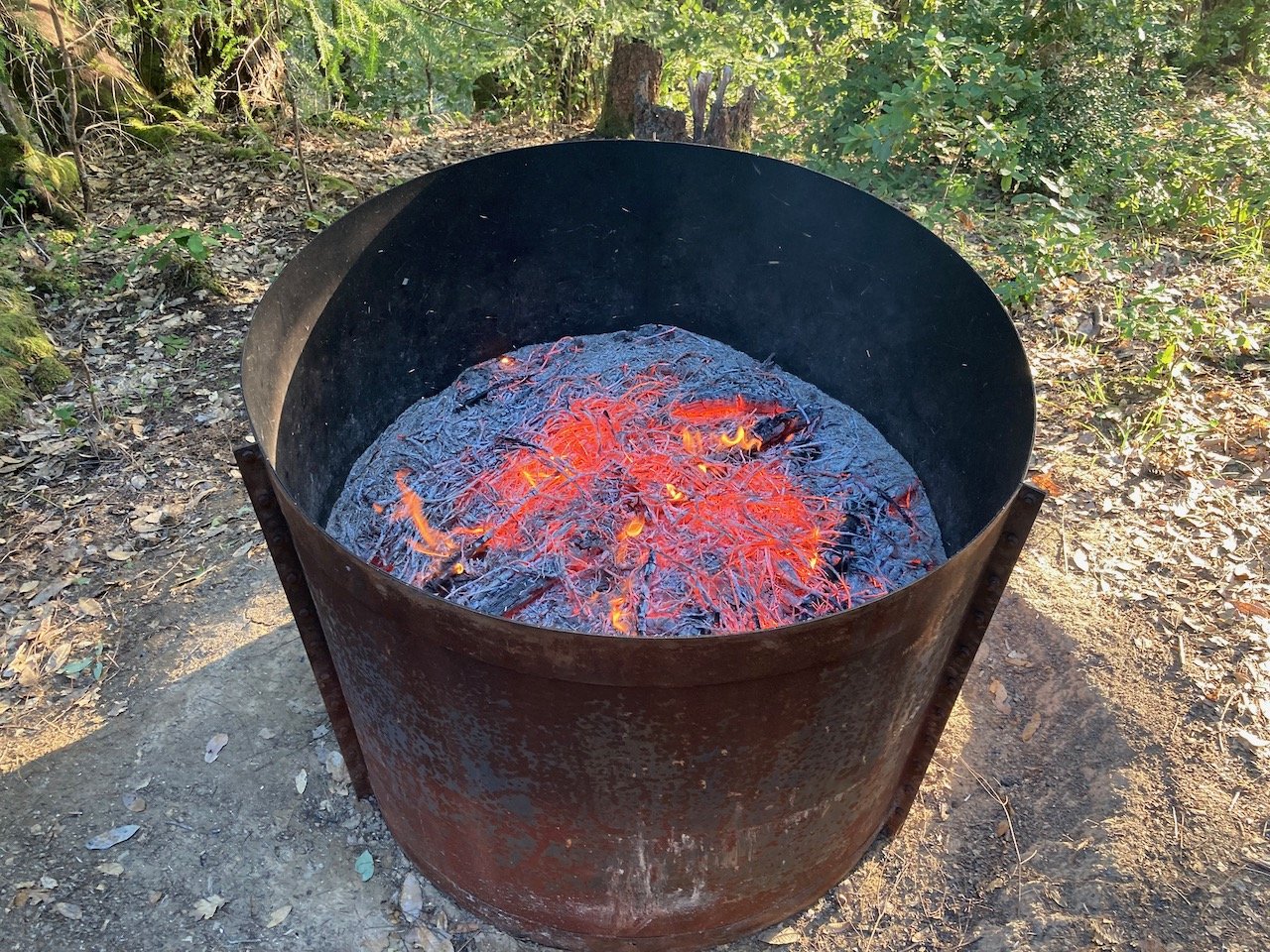What is Black Ripple?
We need to stabilize our land and our lives, not start another wave of exploitation. Instead of a wave, biochar represents a ripple — a Black Ripple of healing throughout the economy and the forest.
A batch of pyrolyzed forest waste about to be quenched and made into biochar
Southern Humboldt County, where I live, has endured several waves of exploitation by European settlers. First the beavers were extirpated to make plush hats for the wealthy. Then tanoak was stripped for the tannins in its bark to cure animal hides, until cheaper methods appeared. Sheep grazed the meadows down to their roots. Exploding populations following the Gold Rush consumed redwood trees by the acre for lumber to build houses until all but a few percent were left, then went after Douglas-firs the same way—with bulldozers. And what began as a benign urban exodus of hippies with a few pot plants became an aggressive domination by outlaw growers, repeating many of the depredations of the timber wave. Throughout most of it, continual fire suppression drastically diminished the health and safety of forest ecosystems.
Western forests are overstocked due to the elimination of fire along with the earlier cultures that fostered them. These fire-dependent landscapes need to burn again as they did for millenia prior to settlement, but in many places the fuel is too dense; simply burning them would revert many of these forests to shrub land. Fuel reduction is required before fire can safely return.
The brush resulting from forest thinning is usually managed like logging slash: burned, chipped, or lopped and scattered. But all of it is suitable for conversion to biochar, which diverts carbon to a form that holds water and nutrients, supports microbes, and doesn’t return to the atmosphere for hundreds of years.
Biochar is new to most people. They often don’t know what it is, what it does, how to make it, or how to use it. To bridge this gap, for several years I’ve been giving public biochar demonstrations based on what I’ve learned from experience. In November, I kicked off a kiln loan program that includes instruction.
Making biochar from excess forest material can be thought of as a transitional practice. Ultimately, occasional healthy fire will suppress the biomass so that we don’t have to. Much of it returns to the soil in the natural carbon cycle, but we might as well derive something useful from the rest. Biochar is definitely more valuable than chips and ashes, although they all have their place in the environment. Biochar has an incomparable role in drawing down carbon from the atmosphere by converting the products of photosynthesis to a durable chemical structure, along with other benefits.
The original idea behind Black Ripple—to spread familiarity with making and using biochar—extends to the ultimate goal of putting fire back on the ground. In prescribed burning, “black” is the term for burned land. “In the black” means a safe place for people and equipment, where later, many fire-dependent plants will spring up. Making biochar from excess fuel is as much about setting the stage for healthy fire as it is about improving soil health and sequestering carbon. Thus “Black Ripple” stands for spreading both the carbon-sequestering material generated with pyrolysis—biochar—and the benefits to the land following a healthy broadcast burn.
Prescribed burn in the understory. Fire does an incredible amount of work!

